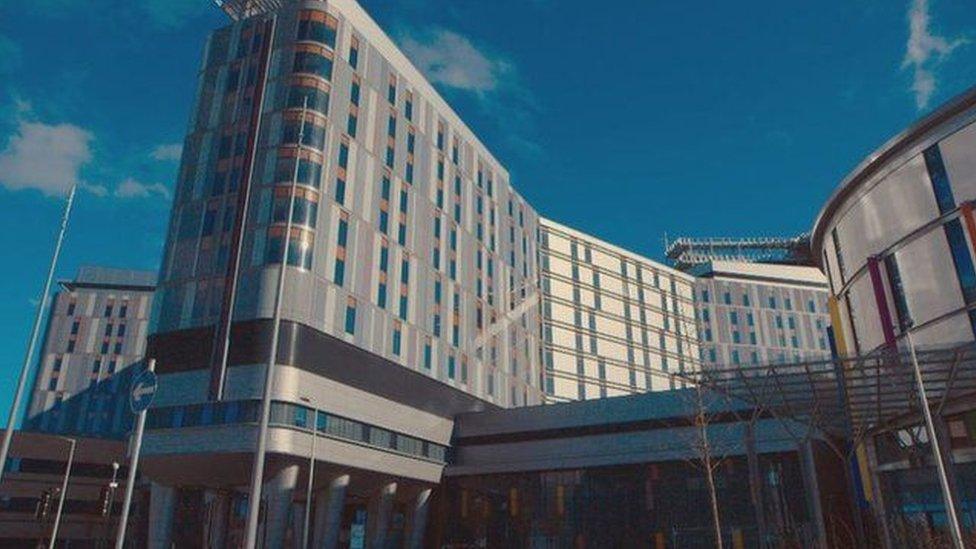Troubled past of Glasgow's QEUH
- Published

The Queen Elizabeth University Hospital is the largest campus in Europe
When its doors opened in 2015, the Queen Elizabeth University Hospital was expected to deliver a significant shake-up of health services in Glasgow.
It was to bring together major specialist services such as renal medicine, transplants and vascular surgery.
State-of-the-art critical care, theatre and diagnostic services were also among its shining qualities.
But the hospital has faced a string of issues since it was handed over by contractors, about four years ago.
The £842m facility, located at the former Southern General site, is currently at the centre of an investigation following two deaths linked to an infection caused by pigeon droppings.
NHS Greater Glasgow and Clyde launched its own inquiry after news of the deaths emerged on Saturday.
Pigeon disease "very unusual" in the UK
Once described in a BBC documentary as a "cross between an airport and a hotel", the sheer scale of the QEUH is renowned across Europe.
Christened the "Busy Lizzie", the hospital is the largest campus of its kind on the continent and treats some 750,000 patients every year - with some travelling from as far north as Skye.
Its emergency department is the most modern in the country and it is the first hospital in Scotland to operate a rooftop helipad, which saves 15 minutes in transfer time.

Facts and figures
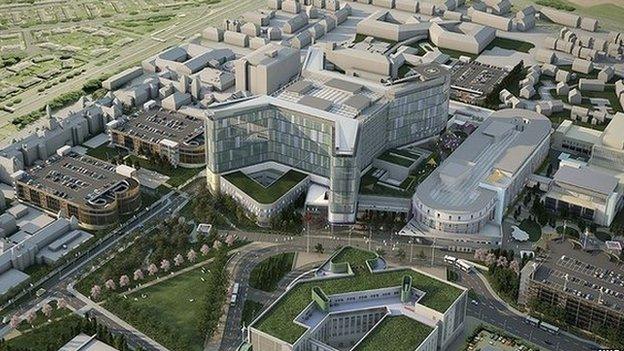
The campus was designed to host two hospitals - one for adults and a dedicated children's facility
12 floors
1,677 beds
90 wards
127 corridors
A porter is estimated to walk 10-20 miles a day on average

Next door, the Royal Hospital for Children brings specialisms together - foetal, maternity and newborn and children's intensive care. Its state-of-the-art paediatric intensive care unit treats some of the sickest children in Scotland.
About 20 teenagers aged between 13 and 19 are treated at the Teenage Cancer Trust unit, which is the largest in the country, and incorporates personal touches to help young people away from home.
A juke box, a pool table and its very own cinema offer some escape from hospital life.
Initial criticism
Formerly known as the South Glasgow University Hospital, the campus and its potential impact made frequent headlines in the immediate aftermath of its official opening on 3 July 2015.
Politicians branded the renaming process a "ridiculous waste" after £100,000 was spent on a royal opening, plaques, catering and signage.
The ceremony, attended by the Queen and the Duke of Edinburgh, cost £29,000 alone.

The Queen met patients and staff on a tour of the £842m facility
In October that year it was reported that residents and councillors had raised concerns over the number of buses travelling to and from the hospital.
It prompted the council to install equipment to assess the levels of harmful nitrogen dioxide.
The QEUH was also heavily criticised for consistently failing to see A&E patients within four hours - a target set by the Scottish government.
Medical workers have previously expressed concerns in private over staffing levels and workload pressures, prompting the Royal College of Nursing to share concerns on the "real strain on services".
Operations were also cancelled at short notice due to bed shortages, a problem faced by health boards across Scotland.
NHS Greater Glasgow and Clyde director Dr Jennifer Armstrong acknowledged the problems were "unacceptable", but said the hospital was performing some of the most advanced medical treatments in the world.
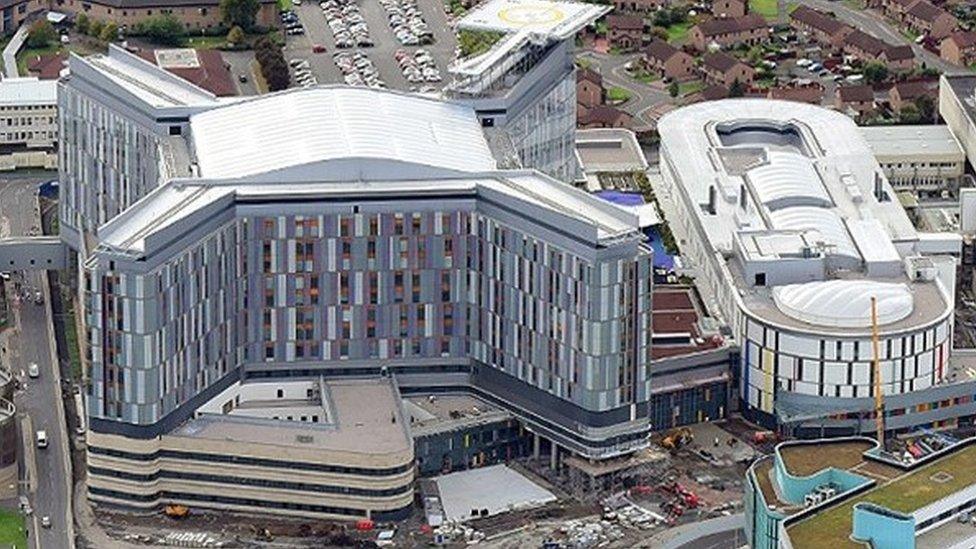
In January 2017 blood and faeces were found on patient trolleys and mattresses during an inspection sparking concerns over the building's cleanliness.
However, Healthcare Improvement Scotland (HIS) inspectors made an unannounced follow-up visit on 1 and 2 August and praised the "good progress" that had been made.
Bacteria issues
Last year the hospital experienced several problems relating to bacteria.
Four children were treated for infections and moved to an adult ward after bacteria were found in the water at the adjoining Royal Hospital for Children.
During the first six months of the year a number of patients were affected by bacteraemia, from wards 2A and 2B.
In June bacteria were found in drains at two wards which treat children with compromised immune systems.

NHSGGC said the latest work had included chemical treatment and the replacement of drains, taps and sinks
NHS Greater Glasgow and Clyde (NHSGGC) said extensive work had been carried out on the taps in the wards at that time.
Then Health Secretary Shona Robison apologised to patients and families affected.
But in September, six new cases were reported and an incident management team was set up.
November saw the water system in the children's facility shut down while remaining patients used commodes, bottled water and hand gel.
By December, work to resolve the bacteria problems had been completed.
- Published19 January 2019
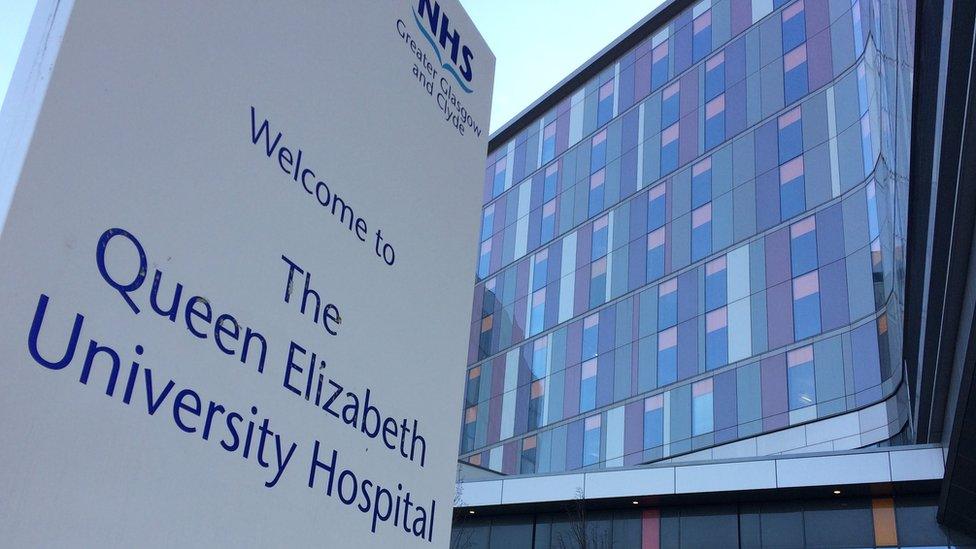
- Published12 February 2018

- Published3 July 2015
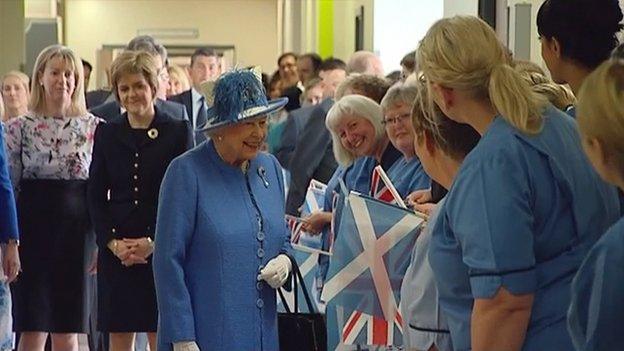
- Published4 January 2018
